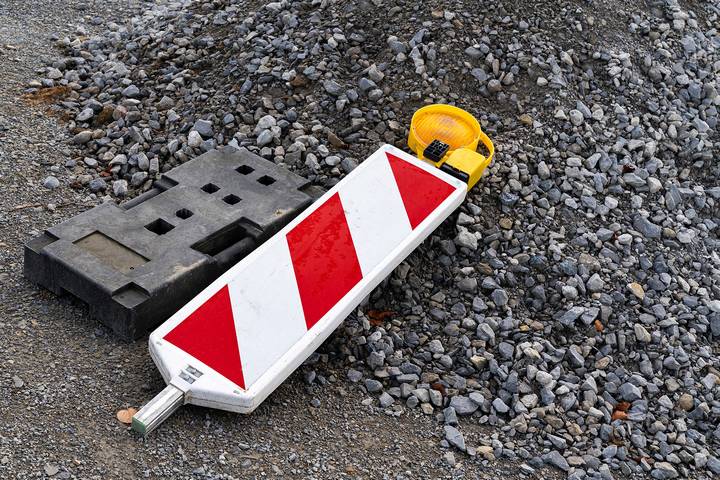A Guide to Dust Control for Gravel Roads

Gravel roads are a cost-effective solution for areas with light traffic. But if you have ever used these roads, you probably know how dusty they can get. The dust is formed when car tires crush the stones into finer bits. Dry weather loosens everything up, and wind whips it into dust clouds.
Dust is dangerous not only for road users because it reduces visibility but also for people living near the roads, as it can cause serious health issues and damage properties. Fortunately, there are several effective methods for controlling dust on gravel roads, making them safer and more enjoyable to use.
While gravel roads are cost-effective, they require regular maintenance, including dust control. When not controlled, dust can reduce visibility, which is dangerous for road users and poses health risks to neighbouring communities. Luckily, there are ways to help you control dust on gravel roads. Overall, calcium chloride and magnesium chloride are the best.
Here’s a guide to dust control for gravel roads:
Water Application

The most basic dust-control method is water application. Spraying water binds dust particles together, preventing them from blowing into the air. However, this is a temporary solution.
Frequent reapplication is needed, especially in dry climates where water evaporates quickly. Moreover, watering should be done carefully because over-watering can soften the road surface and create potholes. It’s better to do light watering frequently than heavy watering.
Calcium Chloride and Magnesium Chloride

Consider using calcium chloride and magnesium chloride dust control solutions. Both are effective dust suppressants for gravel roads. They attract moisture from the air (hygroscopic), forming a brine solution that dampens the road surface and binds dust particles together. This reduces the amount of dust that is caused by vehicles travelling on the road. Chlorides also stabilize the road surface, reducing the need for frequent gravel regrading.
Calcium chloride is more effective in a broader range of climates than magnesium chloride. However, both chemicals have an environmental impact as they absorb water from nearby vegetation. They are also corrosive to metal, meaning they can damage vehicles, guardrails, and road signs if they come into contact.
Windbreaks

Windbreaks control dust on gravel roads by providing a physical barrier that intercepts and deflects wind currents. Windbreaks like hedges, fences, or berms can act as barriers, shielding the road from strong winds that pick up dust particles. This can significantly reduce dust generation, especially during strong gusts.
However, windbreaks are only effective for the section of the road directly behind them. Dust can still be generated from exposed areas and carried by wind beyond the reach of the windbreak. For this reason, they work best when combined with other methods like water application, speed reduction, or chemical dust suppressants.
Speed and Traffic Reduction

Speeding cars is one of the biggest causes of vast clouds of dust on gravel roads. When vehicles travel at higher speeds, they exert greater pressure on the gravel surface, causing the particles to be dislodged and become airborne. Slower speeds mean less force is exerted on the gravel surface, generating less dust. Reducing speed from 40 to 20 mph can reduce dust emissions by 65%.
Moreover, reducing traffic can also help. The more cars that pass, the more dust is produced. Putting up speed and weight limit signs and using alternative modes of transport like bikes and speed bumps can help reduce speed and traffic. However, it’s not very successful in some areas because it depends on road users’ willingness to follow the rules. These rules can be implemented alongside other dust control measures.
Lignosulfonates

Lignosulfonates are a more environmentally friendly alternative to chlorides. These organic dust suppressants are processed from lignin, a natural polymer found in wood. Lignosulfonates work by bonding together the road surface particles.
As the lignosulphate dries, water evaporates from it, and this high-viscosity, naturally sticky material traps the dust particles. Over time, some of the lignosulfonates become completely insoluble due to solar heating, creating a long-lasting dust-suppressed surface.
While not as long-lasting as chlorides, lignosulfonates balance performance and environmental impact well. However, they are pretty expensive and not as effective as chlorides.
Electrochemical Stabilizers

Electrochemical stabilizers modify the electrical charges between the fine particles in the gravel. They achieve this through different mechanisms depending on the specific product you use.
Electrochemical stabilizers are a solid choice for dust suppression on gravel roads because they last longer and function well in both dry and humid conditions. However, they are more expensive than other dust control methods. They require more specialized equipment and techniques for application than spraying liquid solutions.
Sulfonated petroleum and ionic stabilizers
They alter the surface charge of the particles, allowing them to attract and cling to each other better. Thus reduces the likelihood of them becoming airborne as dust.
Bentonite
This clay mineral acts as a binding agent. When it comes into contact with water, it swells and creates a network of microscopic bridges between the gravel particles, further solidifying the surface and reducing dust generation.





